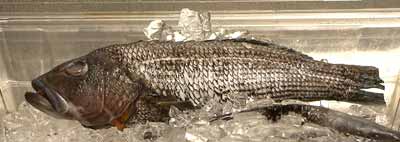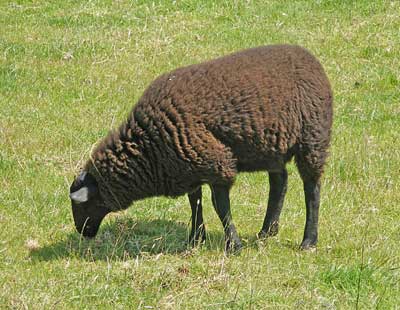Cobia. These fish are found in both the Atlantic and Pacific Oceans and are pelagic. Feeding mainly on crabs and small squid, this adds to the flavour of their own, firmly-textured flesh. They are typically served in the form of grilled or poached fillets.

Black salsify or scorzonera is a long root of a plant of the daisy family with a papery, sooty black skin, it is used in salads. It is not a true salsify, than which it is slighty crisper.
A type of salt, given a dark grey colour by other minerals. It tastes of sea water and is relished in India.
The black sapote is the fruit of a tall, handsome tree with black bark, native to Mexico and the forested lowlands of Central America and was carried to many parts of the world by the Spaniards. On the tree, the fruit is shiny bright green, ripening to a muddy green. The swet-flavoured flesh is glossy, very dark brown and jelly-like, surrounding anything from none to ten flat smooth seeds.

The black sea bass is a small fish, a true bass, found off the Eastern coast of North America in warm weather. It is lean with delicately flavoured flesh due mainly to its own diet of shrimp and crab.
Black sesame seeds are used as a garnish for desserts or ground in soups. A major ingredient in gomasio, in which they are mixed with salt for use as a condiment with rice, salads and raw vegetables.

Although Shetland sheep are an ancient breed, possibly even dating back to the Iron Age, they have become rarer in Scotland as Shetlanders abandoned sheep farming for the oil industry in recent times. In 1977 the British Rare Breeds Surivival Trust classified them as endangered. Since then, efforts to rehabilitate them have been successful and they are no longer considered to be endangered. They were exported to Canada first in 1980 and then to the United States in 1986, where there are now estimated to be some 1,000 head. These are small, compact animals which produce good lamb but are not the best for mutton.